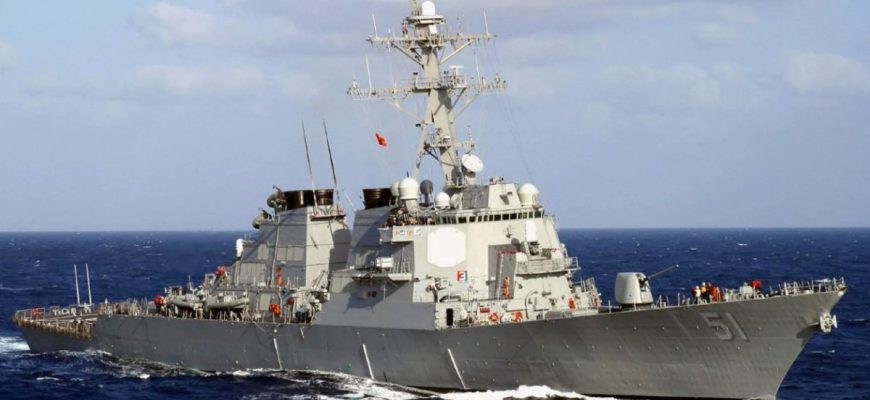RAND Institute Senior Fellow Bradley Martin assessed the development of the future DDG(X) class destroyer. In particular, the pros and cons of the ship’s modular design were considered.
American destroyers of the DDG 51 Arleigh Burke class have already exhausted their modernization capabilities, according to the US Navy. Therefore, the fleet needs a new generation of ships – promising DDG (X) class destroyers. In this regard, senior researcher at the RAND Institute Bradley Martin, in an interview with Naval News, spoke about the concept of future ships and what criticism they may be subject to.
First of all, we are talking about the technical side of the issue, that is, about the so-called Destroyer Payload Module section with additional weapons. The modular design of the DDG(X) destroyer assumes the possibility of installing 12 large silo launchers (instead of the MK41 UVP) for advanced medium-range ballistic missiles of the CPS (Conventional Prompt Strike) type with CHGB hypersonic warheads.
The question is how much will it cost?
On this issue, Martin said that additional weapons on surface platforms, especially those with hypersonic capabilities, are always a positive thing. However, there is also an economic component to consider, since too often individual systems have been developed with a very high level of capability, but were then so expensive that only a few of them could be developed.
“There are times when only a few very powerful platforms are the best choice to counter threats and challenges. But for ships, they can only be in one place at a time. The question is not only “what”, but also “how much,” the expert said.
Versatility of modular design
In addition, all main strike weapons, as a rule, are placed in vertical launch containers, which allows for significant variations in ammunition loading. But it is imperative that the ship’s combat systems be connected to some kind of guidance system.
“The Spruance-class destroyers were equipped with a vertical launch system, but were not equipped with a three-dimensional air defense radar system, which meant that there was no point in placing anti-aircraft missiles in launch cells,” Martin noted.
The expert further explained that the modular design allows for the rapid replacement of necessary systems, even in expeditionary conditions, depending on the mission being performed. Such a solution would solve a critical problem facing current ships. According to the expert, due to the long and intensive use of the ships, they went into maintenance, which was often delayed, so the Navy had to abandon some missions.
“Different threat circumstances require different capabilities, and trying to fit all of those capabilities into one platform is unrealistic, at least not at any realistic cost. Even if we hoped to create a modular design that allowed different capabilities to be interchanged, the fundamental problem is that any the ship can only be in one place at a time,” Martin emphasized.
Self-defense
Another aspect in the development of future destroyers is self-defense capabilities against all classes of threats. Otherwise, the ships will become easy targets.
DDG(X) destroyers will need to have the ability to securely connect to and routinely utilize worldwide communications and intelligence networks. While secure communications capability has long been a requirement for Navy ship deployments, the expert said, the need for near-continuous communications is emerging, and the requirements are likely to grow in the future.
Meanwhile, new requirements again increase the cost of the platform. For example, ships of the LCS class (littoral ship) without weapon direction sensors cost about $700 million, while a Constellation class frigate, similar in size to the LCS, but with an espionage radar for air defense, will cost more than $1.3 billion.
It is also worth balancing between air defense systems and protection from other threats. Martin mentioned the situation in the Black Sea, where Ukrainian naval drones carried out a number of successful attacks on the Russian fleet, sinking several ships. According to the expert, in such conditions, building up air defense means is pointless. Thus, attempting to conduct operations against boarding parties or ships while simultaneously providing air defense over a wide area may be incompatible.
“There will likely come a time when rapid replacement of modules may be the most effective way to maintain a compelling presence. However, to date, a force that together creates a flexible and effective capability has not been developed. Such a force will likely include a mixture of ships, large and small , complex and simple, multi-purpose and single-purpose, manned and unmanned,” the expert concluded.
Important
Update 2.0: US Navy upgrades Arleigh Burke-class destroyers

Let us remind you that the United States plans to move on to testing a sea-based hypersonic missile on the Zumwalt destroyer. If the tests are successful, the weapons will be installed in 2025.








